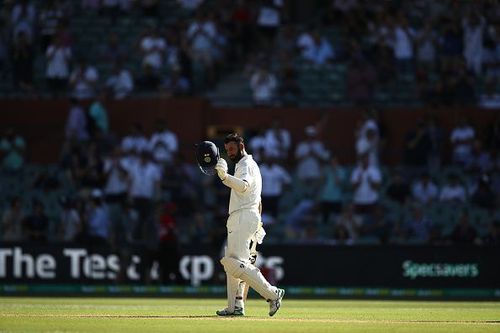
Australia vs India 2018-19: Cheteshwar Pujara shows us the joys of playing the waiting game

The sheer charm of playing Test match cricket is fading away at a rate of knots. The money and fame associated with the shortest format of the game seem to be pulling promising talents away from long-form cricket.
I remember waking up at 5 am in the morning to watch India taking on Australia back in 2003-04. Back then, there used to be a charm about playing and watching Test cricket. It was a time when scoring runs for your country used to be the first thing on a cricketer's to-do list.
But sadly, the advent of Twenty20 cricket has led to a drastic decline in the popularity of Tests.
Traditionalists such as myself still love experiences like getting up early in the morning in order to watch the much-hyped series between India and Australia. The purists would agree with me when I say that Test cricket is the finest form of cricket, even if it doesn't look visually appealing all the time.
All of us, including the spectators and the players, are in the middle of a disruption. A disruption that has seen players shifting away from Tests to franchise-based Twenty20 competitions.
It is sad to see that the stature of Test cricket is no longer what it used to be in the early 2000s.
But what comes as a silver lining is the fact that we still have players who love playing the longest format of the game. And Cheteshwar Pujara is certainly one such cricketer.
Rippling muscles, fancy hairstyles, flashy tattoos - Pujara has none of that. In an era of power hitters and Twenty20 cricket, he is pretty much an outcast. At a time when cricketers look to make the most of each and every scoring opportunity, players like Pujara are happy to stay put and play the waiting game.
Ours is a generation that loves to go after the bowlers. The thrills and spills of Twenty20 cricket have transformed the mindsets of the batsmen.
For instance, the likes of Jos Buttler, Tamim Iqbal, and Rishabh Pant would rather go after the bowlers than play out overs, irrespective of the team's situation. We can call it the exuberance of youth.
At a time when Twenty20 superstars end up getting a lion's share of the limelight, it is certainly not easy being Pujara. The fact that he is one of the most technically sound batsmen in the modern-day game is no overstatement, but despite being an epitome of patience and concentration, Pujara has often been criticized for his so-called over-defensive technique.
Pujara had pretty much been a consistent performer for the Indian side in the longest format of the game ever since notching up his maiden century against the Kiwis back in 2012. But it was not until 2015 that he became a regular name in the Indian Test side.
2015 was a breakthrough year in Pujara's career. In the third match of the series against Sri Lanka (with the series levelled at 1-1), the then 26-year-old was asked to open the batting after the team's regular openers were benched following injuries.
A gritty knock of 145 not out saw Pujara carrying his bat, and a new chapter had begun in Indian cricket.
A double century against the Aussies in the early part of 2017 further cemented Pujara's credentials as a Test match specialist. His vigil spanned a duration of 668 minutes, and saw him facing as many as 525 deliveries.
The 202-run knock ensured that the Indians attained parity in the 3-match series against the Baggy Greens, having gone 0-1 down in the series after losing the series opener. The innings also ensured that Pujara could no longer be denied a place in the pantheon of greats.
The man brings back memories of the good old Test batting greats. He is one of those who make Test match batting look far more beautiful than the thrills and spills of the Twenty20 blitzkrieg.
Pujara won't get the crowd going with swashbuckling hits to the fence, and neither will he sledge the bowler with spine-chilling stares. All he'll do is put his guard up and play a sensible innings, in the hope that he can put the pressure back on the opposition.
His latest century at the Adelaide Oval against a spirited Australian bowling attack further strengthened his place in India's red-ball setup. The 123-run knock brought back memories of V.V.S. Laxman's 148, an innings that, alongside, Dravid's monumental 233, laid the foundation for an unlikely Indian victory back in 2003.
With players such as Pujara playing the game, our generation can sleep peacefully that the future of red-ball cricket is in safe hands.